UNESCO World Heritage Sites In Vietnam: Vietnam Timeless Treasures
Vietnam is among Southeast Asia's most exciting tourist destinations, drawing a large number of tourists from all regions. From the majestic limestone mountains to the picturesque green terraced rice fields and the idyllic white sandy beaches, Vietnam's impressive landscapes are a paradise for nature enthusiasts. Enjoying Vietnam is all about immersing yourself in the vibrant sights, melodious sounds and tantalizing flavors that await you at every turn.
For those with a passion for culture, the country's UNESCO Heritage Sites hold the key to unlocking a deeper understanding of its rich heritage. These sites are scattered throughout the country, giving invaluable insights into Vietnamese traditions. Among the impressive collection of eight UNESCO World Heritage Sites in Vietnam, Vietnam Immigration Services will take you to discover five unmissable heritage sites.
- The complex of Hue monuments
- Trang An landscape complex
- Hoi An UNESCO World Heritage Site
- Ha Long Bay
- My Son Sanctuary, Vietnam - Best things to do in Vietnam
- The citadel of the Ho Dynasty - A symbol of enduring strength
- Phong Nha - Ke Bang National Park - Underground Wonders Await
- Thang Long Imperial Citadel - Traces of a Millennial Capital
- Conclusion
The complex of Hue monuments
In central Vietnam's city of Hue, a magnificent treasure from the past that draws tourists worldwide is the Complex of Hue Monuments, recognized by UNESCO as a cultural heritage site. The complex, embraced by the lush forested hills, with the gentle flow of the Perfume River at its feet, encompasses administrative offices, military headquarters, palaces, temples and even the imperial tombs of the Nguyen emperors.
Strategically situated along the banks of the Perfume River, the feudal capital of Vietnam was ingeniously designed to offer easy access to the sea. The Complex of Hue Monuments is inspired by Beijing's famed Forbidden City. The structures within the citadel were meticulously arranged to align with cosmological principles encompassing the five elements, cardinal points and vibrant colors.
As you stroll through this awe-inspiring complex, you can witness Imperial Vietnam spring to life before your very eyes. Every corner reveals imposing statues, priceless treasures and intricate mosaics, showcasing the opulence of the Nguyen Dynasty in Vietnam. Although this dynasty ended in 1945, the symbolic significance of the Hue Monuments as the former political, cultural and religious heart of Vietnam continues to resonate to this day.
Don't forget to bring your camera to capture countless breathtaking photographs of exquisite landscape features in the complex. If you wish to explore further, consider renting a bicycle and pedaling your way to the imperial tombs, immersing yourself in the captivating countryside views of Hue along the way.
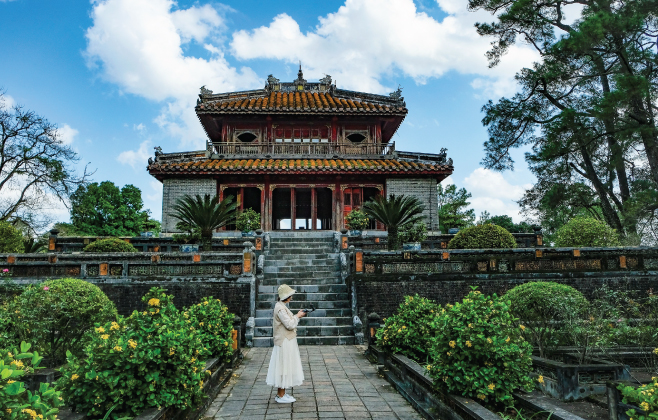
The Complex of Hue Monuments is a magnificent treasure in central Vietnam
Trang An landscape complex
Trang An Landscape Complex, known locally as 'Ha Long Bay on Land' owing to its stunning riverine landscape with dramatic karsts, was designated as a UNESCO World Heritage Site in June 2014. This area has enchanted foreigners with a blend of sacred temples, serene countryside and breathtaking karsts.
The heritage site comprises three elements that render its attractive appearance. Hoa Lu Ancient Capital was the nation's seat of power during the 10th and 11th centuries. Trang An Scenic Complex is a stunning landscape encompassing serene waterways and towering karst formations. The last is Hoa Lu Forest which completes this harmonious trio.
The sublime beauty of Ninh Binh lies in the majestic karst peaks rising steeply up from the lush valleys below. Tourists are often taken around the complex on traditional sampans, passing through enchanting grottoes and dense rainforests. These sampans are skillfully guided by local boatmen and during the trip, you will be told tales of the prehistoric inhabitants, as well as the present-day farmers who tend to the land. Along the way, you'll encounter tranquil pagodas on the river banks and even have the opportunity to explore the film set of "Kong: Skull Island" on foot.
The best time to visit Trang An is spring, after the Lunar New Year from February to April. During this time, the weather is pleasant and tourists have a chance to see enchanting green rice fields. However, if you're a photographer searching for stunning vistas, the second week of June is ideal. During this time, the rice fields transform into a brilliant golden hue, ready for harvest. Despite the intense heat that accompanies this season, the awe-inspiring beauty of the landscape makes it a visit worth undertaking.
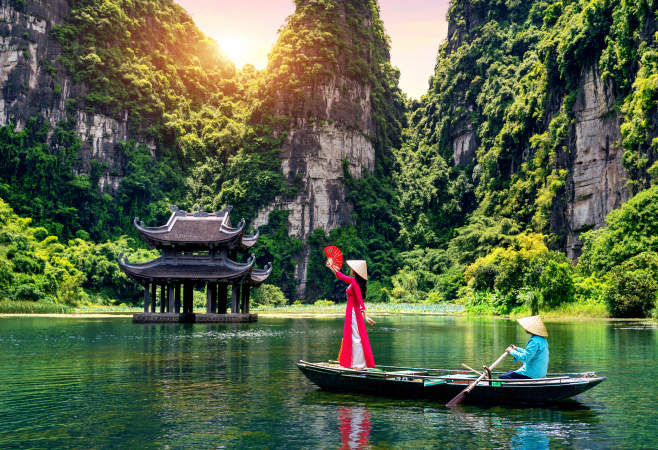
Trang An Landscape Complex was designated as a UNESCO World Heritage Site in 2014
Hoi An UNESCO World Heritage Site
Hoi An is a city on Vietnam's central coast which is known for its well-preserved Ancient Town. Once a bustling trading port, welcoming merchants from distant lands, Hoi An holds a rich historical legacy within its ancient walls. Between the 15th and 19th centuries, Chinese, Japanese and Europeans settled along the meandering Thu Bon River. In 1999, Hoi An Ancient Town was recognized as a UNESCO Cultural Heritage Site owing to its architectural and cultural value.
As you wander through the narrow streets of Hoi An, its unique blend of cultural influences comes to life before your eyes. Shop houses stand shoulder-to-shoulder with ancestral homes adorned with intricate wood carvings atop their tiled roofs are the highlights of Hoi An.
To enjoy Hoi An's wholly charming beauty, tourists are highly recommended to visit in the evening. As the sun sets, the faded streets come alive with the warm glow of countless lanterns, casting a magical ambiance over the town. The scenery is even more brilliant if you visit Hoi An on a night with a full moon when you witness a spectacle of joyous celebration. It's an enjoyable experience to join the crowds of locals who gather to revel in the moonlit splendor along the riverbanks. Why shouldn't you experience the vibrant dragon dances, take a boat ride along the gentle currents of the Thu Bon River and immerse yourself in the festive atmosphere permeating every town corner?
Hoi An, with its timeless beauty and captivating traditions, invites you to step into its embrace and become part of its living history.
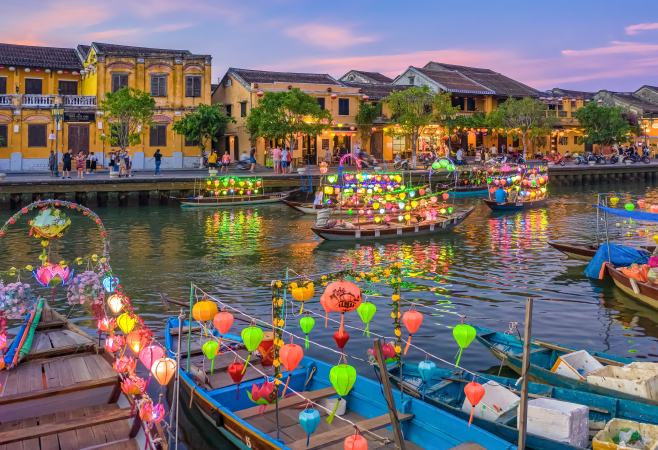
Hoi An Ancient Town invites you to step into its living history
Ha Long Bay
Ha Long Bay, recognized twice as a UNESCO World Heritage Site in Vietnam, stands proudly among Vietnam's top-notch destinations. The mythical allure and breathtaking sceneries in Ha Long Bay captivate the hearts and imaginations of all who visit.
The name "Ha Long" itself holds a tale of wonder, as it translates to "descending dragon" in Vietnamese folklore. Legend has it that a celestial dragon descended from the heavens, spitting out thousands of precious pearls that transformed into the magnificent islands and islets that grace the horizon today. Hidden among more than 1,600 limestone formations is a treasure trove of secluded grottoes, sparkling beaches and awe-inspiring caves that leave visitors spellbound.
Embarking on an overnight cruise is undoubtedly the ultimate way to experience the wonders of Ha Long Bay. It could not be better to start your mornings by embracing the serene beauty of a sunrise, engaging in revitalizing tai chi sessions and then embarking on captivating cave explorations. As the day unfolds, swimming on the emerald-green waters, exhilarating kayaking adventures, or simply unwinding on the sun deck are the most recommended activities. And when dusk falls, you will be enchanted by the mesmerizing sunsets that paint the horizon, accompanied by gentle sea breezes that bring tranquility.
Ha Long Bay's weather can vary depending on the time of year you visit. It may greet you with radiant sunshine and clear skies or might envelop you in a chilly, misty ambiance. Therefore, you should check the weather forecast before embarking on your journey to ensure the most fun-filled moment in this captivating bay.
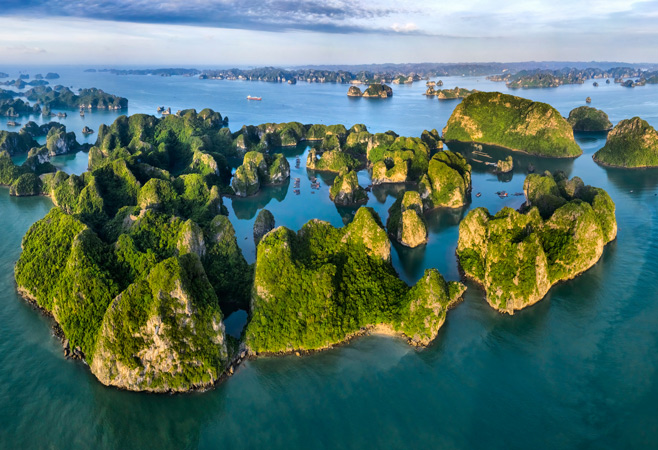
Ha Long Bay was recognized twice by UNESCO as a World Heritage Site
My Son Sanctuary, Vietnam - Best things to do in Vietnam
One of the must-visit attractions in Vietnam is the magnificent My Son Sanctuary, Vietnam, which has been recognized as one of the '"15 best things to do in Vietnam.' by Lonely Planet.
This complex of breathtaking red-brick temples and towers offers deep insights into the architectural marvels of the Champa civilization, preserved in enduring material remnants. For travelers exploring Hoi An, a visit to the My Son Sanctuary is a must. This enchanting spiritual journey will take them deep into a serene jungle setting and admire its architectural masterpieces, transporting them back in time.
What makes the sanctuary truly unique and rare among Cham towers' architectural forms is its remarkable configuration. Visitors will be amazed by the sight of interconnected towers encompassed by walls, yards and roads, with the main temple positioned at the heart of the complex. The intricate designs of the structures are deeply intertwined with local cultural influences.
Recognized as a World Cultural Heritage Site by UNESCO in 1999, My Son encompasses over 70 structures, accompanied by extensive hidden archaeology. Each temple showcases a distinctive structural style, reflecting the different eras of the Cham Kingdom throughout the ten centuries. Despite being abandoned and partially in ruins, these captivating structures continue to draw in countless tourists, particularly photographers and enthusiasts fascinated by ancient civilizations and their spiritual architecture.
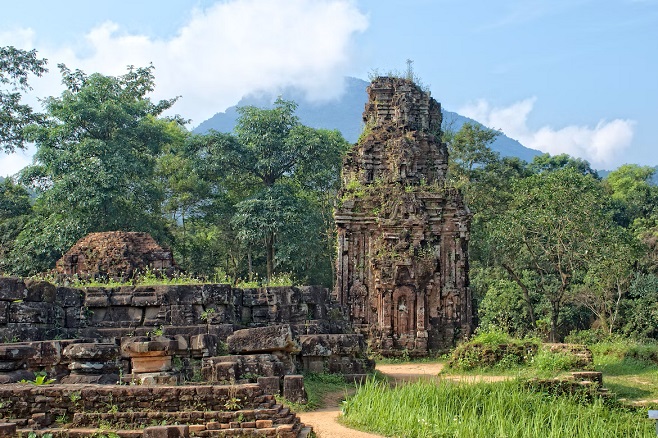
My Son Sanctuary has been recognized as one of the 15 best things to do in Vietnam
The citadel of the Ho Dynasty - A symbol of enduring strength
Tucked away in Vinh Loc District of Thanh Hoa Province, the Citadel of the Ho Dynasty stands as a testament to Vietnam’s military and political ingenuity. Recognized by UNESCO in 2011 as a World Cultural Heritage Site, the citadel was built in the late 14th century during the short-lived Ho Dynasty and is famed for its large stone architecture and strategic planning.
Unlike many Vietnamese heritage sites that draw attention for their ornate aesthetics, the Ho Citadel commands respect through its austere grandeur and monumental scale. Constructed entirely from massive limestone blocks - some weighing up to 20 tons - this site showcases advanced construction techniques of its era.
Visitors today can explore its massive southern gate, remaining ramparts and moats, all surrounded by peaceful rural landscapes. It’s a destination often overlooked by mainstream travelers, yet offers a profound connection to Vietnam’s historical resilience and engineering prowess.
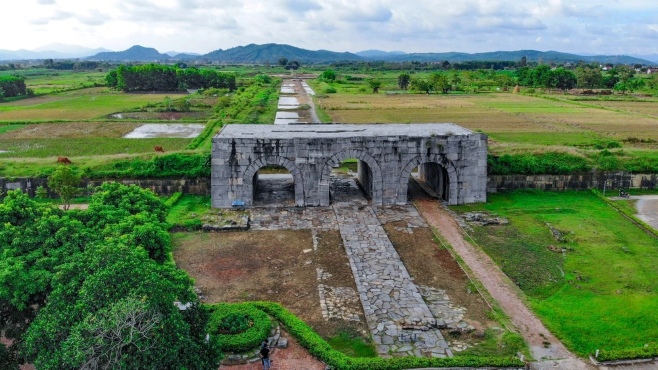
The citadel of the Ho Dynasty - A symbol of enduring strength
Phong Nha - Ke Bang National Park - Underground Wonders Await
Located in Quang Binh Province, Phong Nha - Ke Bang National Park is a UNESCO Natural World Heritage Site that stuns visitors with its dramatic karst landscapes, underground rivers and some of the world’s largest and most spectacular cave systems. It was first inscribed in 2003 and later extended in 2015 for its geological significance.
The crown jewel of the park is Son Doong Cave, the world’s largest natural cave, which can fit an entire New York City block inside. For adventurous travelers, multi-day treks to Son Doong offer the ultimate expedition, complete with river crossings, jungle camping and surreal subterranean formations.
Other popular sites include Phong Nha Cave, accessible by boat through an underground river and Paradise Cave, which stretches 31 kilometers beneath limestone mountains. With its unmatched biodiversity, dramatic landscapes and eco-tourism potential, Phong Nha - Ke Bang has earned its place as one of the most extraordinary destinations in Southeast Asia.
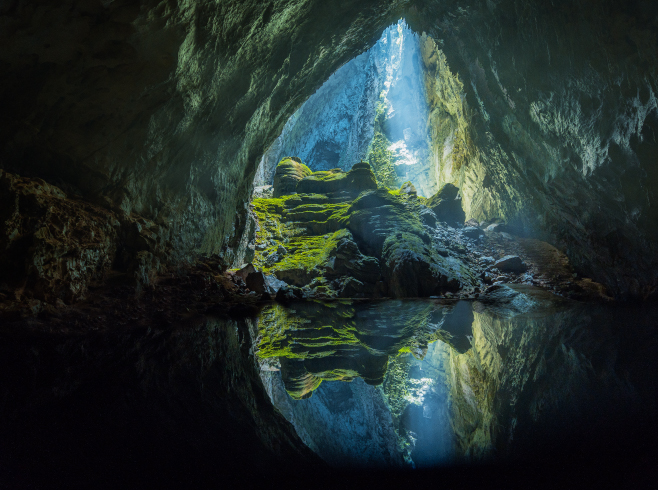
Son Doong Cave
Thang Long Imperial Citadel - Traces of a Millennial Capital
Situated in the heart of Hanoi, the Thang Long Imperial Citadel is a symbol of Vietnam’s thousand-year-old history. Inscribed as a UNESCO World Cultural Heritage Site in 2010, this vast complex reflects the legacy of successive Vietnamese dynasties that ruled from this very site over thirteen centuries.
Archaeological excavations have unearthed royal palaces, ancient roads, wells and foundations dating back to the 7th century. The site offers a unique layering of historical influences - from the Ly and Tran dynasties to the Nguyen emperors and French colonial administration.
Don’t miss the Doan Mon Gate, Flag Tower of Hanoi and Kinh Thien Palace remains. Many exhibitions also display recovered ceramics, artifacts and architectural models that bring ancient Hanoi to life. For history buffs and cultural travelers, this is a must-see location that connects Vietnam's present to its illustrious past.
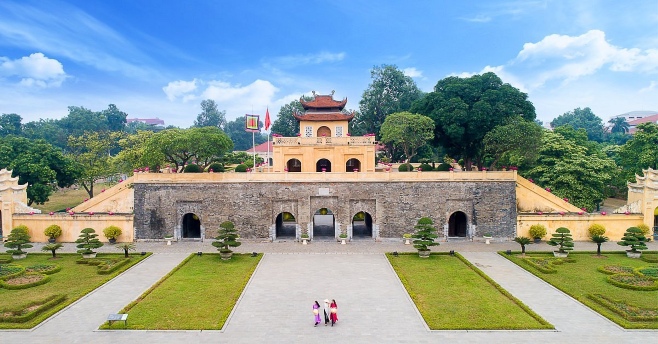
Thang Long Imperial Citadel
Conclusion
Vietnam is calling you! Let's backpack and prepare for remarkable moments in the Unesco World Heritage Sites of Vietnam! A Vietnam visa online will help you arrange your trip easily and properly. Contact Vietnam Immigration Services if you have any inquiries about travel documents to Vietnam.
Related Articles
- Moc Chau: Highland paradise of tea hills & cultural adventures
- Team building and CSR activities in Vietnam: Visa services
- Honeymoon in Vietnam: Best romantic packages for couples
- Amanoi Resort in Vietnam: Luxury retreat in Vinh Hy Bay
- Six Senses resorts in Vietnam: Ninh Van Bay and Con Dao
- Con Dao Island: A historical and natural paradise in Vietnam
HOW CAN WE HELP?
APPLY WITH CONFIDENCE










